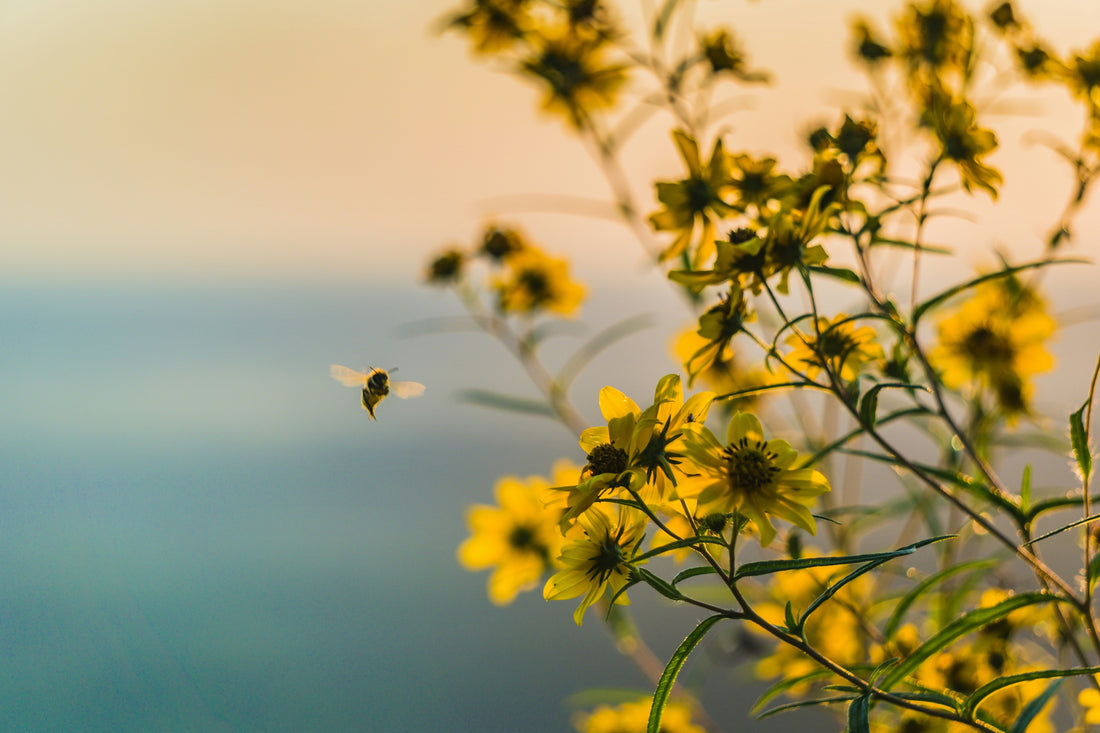Bees might be small, but they do big work. From pollinating our food to keeping entire ecosystems balanced, these buzzing little powerhouses are way more important than most people realise. But right now, they're struggling thanks to habitat loss, pesticides, climate change, and more.
The good news is, you don’t need to wear a beekeeper’s suit to make a difference. Here are five genuinely easy things you can do to help keep bees safe and thriving.
1. Grow a Bee-Friendly Garden
Think of your garden, balcony, or even a few pots by your window as a bee buffet. Bees love flowers, but not just any kind. Go for plants rich in nectar like lavender, borage, wildflowers, sunflowers, and herbs like thyme and rosemary.
The goal is to have plants that bloom at different times of the year so bees always have something to snack on. Skip the overly “perfect” ornamentals as they don’t always provide much nectar. And if you can, let things grow a little wild. Bees like a bit of mess.
Even a tiny patch can go a long way. If you plant it, they will come.
2. Go Chemical-Free
Pesticides, herbicides, and fungicides might keep your garden looking neat, but they’re terrible for bees. Many of these chemicals interfere with their ability to navigate, forage, and survive. Some even weaken their immune systems, making them more vulnerable to disease and parasites.
So, do our bees a favour and ditch the chemical sprays. Look for organic gardening alternatives or natural pest repellents like neem oil, garlic spray, or the good old companion planting. Trust us, your garden will survive, and the bees will thank you.
3. Leave Out Water For Bees
Bees need water too. And no, your pool or pond isn’t bee-friendly because those surfaces are too slippery, and bees can easily drown trying to get a sip.
What is a better option? Fill a shallow bowl with clean water and add some pebbles or marbles so bees can land safely while they drink. Place it somewhere shady and near your flowers if possible. It’s a small act, but it could help a tired bee recharge and keep pollinating.
4. Support Local Beekeepers
One of the easiest ways to support bee health is by supporting the people who care for them. When you buy honey or other bee products from local beekeepers, you’re backing sustainable practices that prioritise bee welfare.
Plus, local honey is unprocessed, delicious, and often better for you than mass-produced supermarket options. It’s a win-win.
At Honey & Greens, we take this seriously. Every jar of our honey is carefully sourced from trusted beekeepers who treat their bees with care, not just as honey machines. By choosing brands like ours, you’re playing a part in supporting healthy bee populations.
5. Donate to Organisations That Protect Bees
If you don’t have the time or space to plant flowers or keep bees, you can still help by supporting the people doing the groundwork. Brilliant charities and organisations are working to protect bee habitats, raise awareness, fund research, and get people excited about conservation.
A few worth checking out:
● British Beekeepers Association
These groups help protect the ecosystems bees rely on, and they’re always looking for support, whether it’s money, time, or simply spreading the word.
It Doesn’t Take Much to Make a Big Impact
Bees aren’t asking for much. A few flowers, fewer chemicals, a safe place to rejuvenate, and a bit of support for the people trying to keep their world alive.
So no, you don’t need to become a beekeeper to help save the bees. Just start where you are, with what you have. And if you’re looking for an easy first step, try a jar of our cinnamon honey made with love, by bees, for humans who care.
References
The Bee Conservancy. 10 Ways to Save the Bees for Earth Month. Retrieved from https://thebeeconservancy.org/10-ways-to-save-the-bees/
Friends of the Earth (2022). What Can I Do to Help the Bees? Retrieved from https://foe.org/blog/what-can-i-do-to-help-the-bees/

